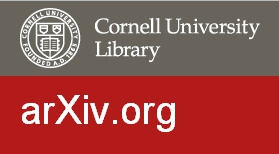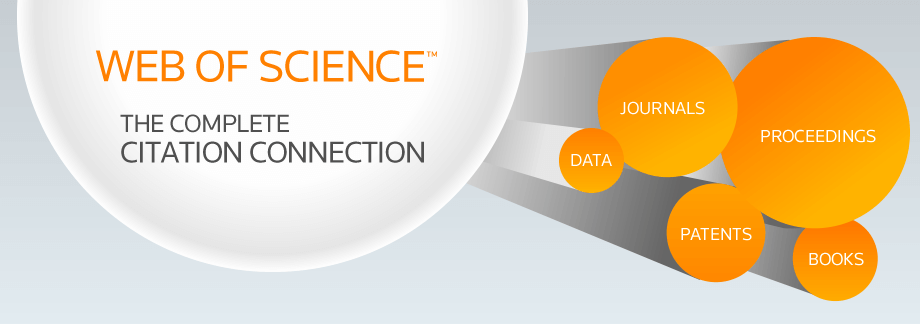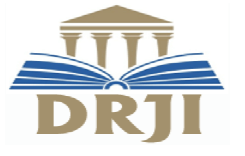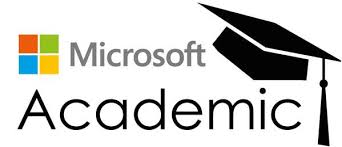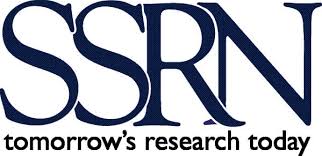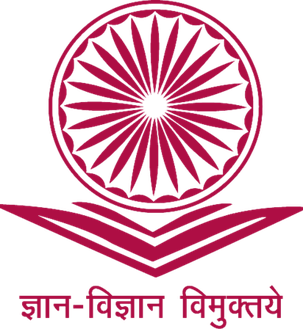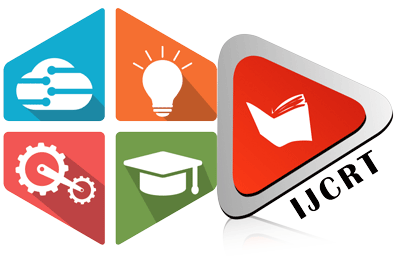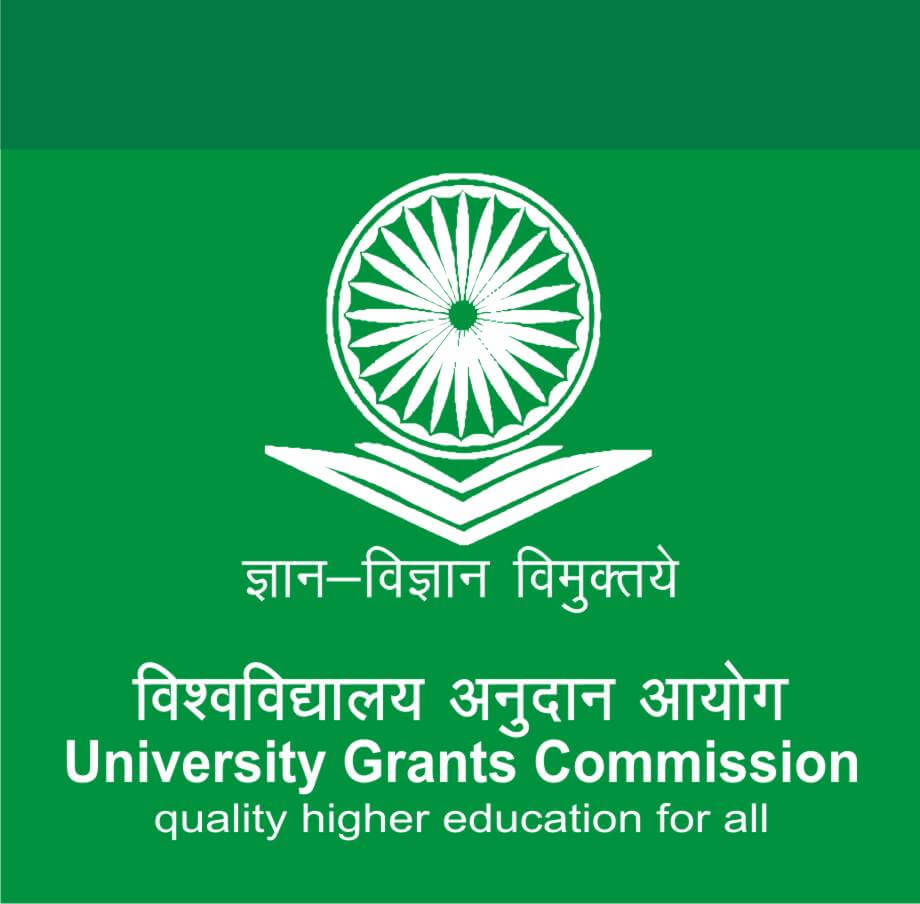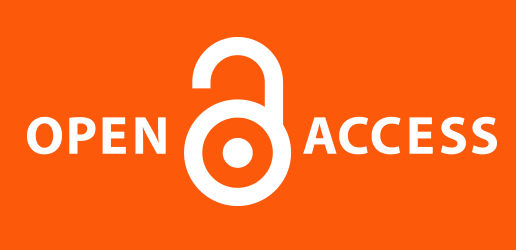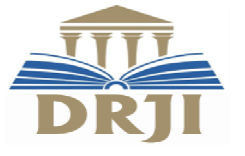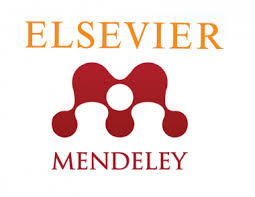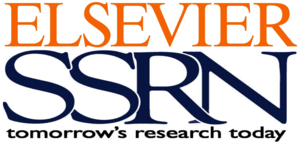INTERNATIONAL JOURNAL OF CREATIVE RESEARCH THOUGHTS - IJCRT (IJCRT.ORG)
International Peer Reviewed & Refereed Journals, Open Access Journal
IJCRT Peer-Reviewed (Refereed) Journal as Per New UGC Rules.
ISSN Approved Journal No: 2320-2882 | Impact factor: 7.97 | ESTD Year: 2013
Call For Paper - Volume 13 | Issue 10 | Month- October 2025
Scholarly open access journals, Peer-reviewed, and Refereed Journals, Impact factor 7.97 (Calculate by google scholar and Semantic Scholar | AI-Powered Research Tool) , Multidisciplinary, Monthly, Indexing in all major database & Metadata, Citation Generator, Digital Object Identifier(CrossRef DOI)
Contact Us Click Here
WhatsApp Contact Click Here
Volume 12 | Issue 3
| IJCRT Journal front page | IJCRT Journal Back Page |
Paper Title: Neonatal Sepsis-Clinical Presentation, Riskfactors Management And Outcome
Publisher Journal Name: IJCRT
Your Paper Publication Details:
Published Paper ID: - IJCRT2403226
Register Paper ID - 252048
Title: NEONATAL SEPSIS-CLINICAL PRESENTATION, RISKFACTORS MANAGEMENT AND OUTCOME
Author Name(s): Dr.K. CHANDRA SEKHAR, S. TAHURA BATUL, J. ZUHA KHANAM, K. SHANMUKH GANESH
Publisher Journal name: IJCRT
Volume: 12
Issue: 3
Pages: b809-b823
Year: March 2024
Downloads: 156
Abstract
Abstract: OBJECTIVE: Sepsis accounts for 30-50% of all neonatal fatalities annually in underdeveloped nations, blood cultures in newborn septicemia are not usually positive. Neonatal septicemia should be diagnosed using a combination of clinical hematological and other microbiological data. In this study our aim is to find out how neonatal sepsis present clinically and what are the risk factors associated with sepsis in neonates, how to manage neonatal sepsis and outcome METHODOLOGY: Our study is Prospective, Observational, Hospital based Clinical study. Conducted in Pediatric Intensive care unit of Government General Hospital attached to Kurnool Medical College, Kurnool. The sample was collected based on inclusion and exclusion criteria. CONCLUSION: Neonatal sepsis undoubtably is a significant cause of neonatal mortality regardless of onset of sepsis, hence all the efforts should be taken towards controlling infection in indisposed neonates. Local microbiological data base like antibiogram should be carefully updated regularly to provide information to clinicians in effective management of sepsis.
Licence: creative commons attribution 4.0
License
Keywords
Key words: National Neonatal Perinatal Database (NNPD), Interleukin-6 (IL-6)
License
Paper Title: Online Doctor Appointment Booking System
Publisher Journal Name: IJCRT
Your Paper Publication Details:
Published Paper ID: - IJCRT2403225
Register Paper ID - 252214
Title: ONLINE DOCTOR APPOINTMENT BOOKING SYSTEM
Author Name(s): A.I.Kale, S.M.Shejal, N.B.Kapase, N.C.Fulare, S.S.Patil
Publisher Journal name: IJCRT
Volume: 12
Issue: 3
Pages: b799-b808
Year: March 2024
Downloads: 228
Abstract
The main theme of this proposal was to develop a smart appointment booking system, that provides patients or any user an easy way of booking a doctor's appointment online in health care. The purpose of doctor's appointment system is to automate the existing manual system by the help of computerized equipment, so that their valuable data/information can be stored for a longer period with easy accessing and manipulation of the same. The required software and hardware are easily available and easy to work with. This system overcomes problem of searching doctors by helping users to get doctor according to their need, and other related health care details at a single place. Also solves issue of managing and booking appointments according to user's choice or demands. This system provides the power of direct interaction between doctors of customer choice when required for your small problems. This application is basically organized in a bipartite in terms of functions: doctor can get the patients data to understand the history and users(patients) can get registered in few seconds at comfort of home. Online doctor's appointment application was devised to offer huge variety in health care to users, case of registering and get verified doctor, view medical progress and all the data get stored in database.
Licence: creative commons attribution 4.0
License
Keywords
Online Doctor Appointment Booking System
License
Paper Title: Prediction of Diabetic Retinopathy through Retinal Images using Deep Learning
Publisher Journal Name: IJCRT
Your Paper Publication Details:
Published Paper ID: - IJCRT2403224
Register Paper ID - 252288
Title: PREDICTION OF DIABETIC RETINOPATHY THROUGH RETINAL IMAGES USING DEEP LEARNING
Author Name(s): Yogesh Kumar P G, Bhuvaneswari M, Singarachelvan S, Sriram V, Suganthan N
Publisher Journal name: IJCRT
Volume: 12
Issue: 3
Pages: b790-b798
Year: March 2024
Downloads: 220
Abstract
Diabetic retinopathy (DR) is a significant cause of vision impairment among individuals with diabetes. Early detection and timely intervention are crucial for preventing vision loss. This study presents a deep learning-based approach for the prediction of diabetic retinopathy using retinal images. We employed a convolutional neural network (CNN) architecture to extract meaningful features from a large dataset of retinal images. The dataset consisted of both normal and diabetic retinopathy-affected images, with gradings for the severity of DR. Our model achieved promising results in classifying retinal images into different stages of diabetic retinopathy, with high accuracy and sensitivity.
Licence: creative commons attribution 4.0
License
Keywords
DR grading, DR detection, Deep learning, Convolutional neural network, Retinal fundus images.
License
Paper Title: A study to assess the level of stress among parents of mentally retarded children studying in special school in Meerut
Publisher Journal Name: IJCRT
Your Paper Publication Details:
Published Paper ID: - IJCRT2403223
Register Paper ID - 252589
Title: A STUDY TO ASSESS THE LEVEL OF STRESS AMONG PARENTS OF MENTALLY RETARDED CHILDREN STUDYING IN SPECIAL SCHOOL IN MEERUT
Author Name(s): B.Sc Nursing Students (Adam Meer, Aksha, Huzaifa, Kareena Chaudhary, Khushi Passi, Lubna Parveen, Rafeya Banoo, Saba Parveen, Shibra Saifi, Shumaila Faheem) College of Nursing, LLRM Medical College,, Sanjay Saini, Prof. Vir Vikram Sahdev Singh, Prof. S. Balamani Bose
Publisher Journal name: IJCRT
Volume: 12
Issue: 3
Pages: b780-b789
Year: March 2024
Downloads: 174
Abstract
Licence: creative commons attribution 4.0
License
Keywords
Stress, Parents of Mentally retarded Children
License
Paper Title: AutoScout: Arduino-ower GPS Adventure
Publisher Journal Name: IJCRT
Your Paper Publication Details:
Published Paper ID: - IJCRT2403222
Register Paper ID - 251033
Title: AUTOSCOUT: ARDUINO-OWER GPS ADVENTURE
Author Name(s): Punam Rajput, Aditi Balasaheb Bhande, Bhumi Ganesh Chitare, Siddhi Sagar Hagavane, Rashi Ramesh Dode
Publisher Journal name: IJCRT
Volume: 12
Issue: 3
Pages: b773-b779
Year: March 2024
Downloads: 167
Abstract
The abstract for a project titled "AutoScout: Arduino-Powered GPS Adventure" can be summarized as follows: In an ever more interconnected global environment, the fusion of wireless communication technologies has emerged as a prominent focus of research and advancement. The implementation of a Wi-Fi-controlled car with obstacle avoidance and GPS tracking operates through user commands sent over Wi-Fi, interpreted by a microcontroller. It incorporates several key functions. The aim of our project is to control a car using the fastest WiFi technology. Obstacle Detection Sensors monitor the car's surroundings for obstacles. The GPS Location module pinpoints the car's current location and captures images of the surrounding environment. Data processing is used by microcontrollers to process GPS data and obstacle detection to make navigation decisions. Obstacle Avoidance the system adapts to avoid real-time obstacles. Key components of the system include Wi-Fi communication for user commands, an Arduino microcontroller for processing data, and GPS technology for location tracking. The combination of these technologies allows for real-time control, obstacle avoidance, and accurate route planning. This abstract highlights the significance of integrating Wi-Fi and GPS in the realm of autonomous vehicles, facilitating intelligent and autonomous car movement with broader applications in today's technologically connected world.
Licence: creative commons attribution 4.0
License
Keywords
AutoScout, Arduino-power, pinpoint, avoidance, autonomous vehicles.
License
Paper Title: Study of Installation of 5kw Rooftop Solar System
Publisher Journal Name: IJCRT
Your Paper Publication Details:
Published Paper ID: - IJCRT2403221
Register Paper ID - 252488
Title: STUDY OF INSTALLATION OF 5KW ROOFTOP SOLAR SYSTEM
Author Name(s): Aniket fating, G. H. Agrawal, Chiranjiv Sawalakhe, Samson Alcorn, Harshal Kamble
Publisher Journal name: IJCRT
Volume: 12
Issue: 3
Pages: b768-b772
Year: March 2024
Downloads: 210
Abstract
Rooftop solar power plants offer a multitude of advantages, including self-sufficiency in electricity provision, cost-effectiveness, insulation against potential future increases in electricity tariffs, and sustainable use of otherwise unused roof space. This paper details a specific 5kw solar power plant, designed to harness solar energy efficiently by connecting all level-4 electrical loads to the system. The components utilized include six 325W solar panels, a robust GI structure, an inverter, and a lightning arrester.
Licence: creative commons attribution 4.0
License
Keywords
Photovoltaic, Consumption, Rooftop, Solar, Roof -Top, Sustainability.
License
Paper Title: Enhancing Mentalwellbeing Forholistic Development Of Divyangjan Through Indianknowledge System
Publisher Journal Name: IJCRT
Your Paper Publication Details:
Published Paper ID: - IJCRT2403220
Register Paper ID - 252297
Title: ENHANCING MENTALWELLBEING FORHOLISTIC DEVELOPMENT OF DIVYANGJAN THROUGH INDIANKNOWLEDGE SYSTEM
Author Name(s): Dr. Sadhana Sonu Tandle
Publisher Journal name: IJCRT
Volume: 12
Issue: 3
Pages: b765-b767
Year: March 2024
Downloads: 192
Abstract
Ralph Waldo Emerson (1860) says that, "The first wealth is health". He suggests that good health is required for holistic Development. The significance of good health has huge impact on mental well-being. The National Education Policy (NEP), 2020 emphasizes on the need of psychological well-being of students. Mental Health and Well-being of School Students Survey, 2022 states that, education is not just for feeding information to the mind; but for holistic development as well. Mental well-being has a significant relation with the success of education. However, today's lifestyle has become stressful due to multiple reasons. Similarly, stress and depression is also seen among school going children. Nearly, 20% children and adolescents suffer from mental health concerns like stress, anxiety, bullying, and learning disability and/or alcohol, and substance abuse. Divyangjan face it more predominantly. The present paper tries to explore how the Indian Knowledge System (IKS) can be used in enhancing mental well-being of children with disability. The IKS comprising Ayurveda, Yoga, Vedanta, and Vedic sciences have shown ways in this regard. This also shows that IKS has tremendous potential to contribute in physical and mental well-being. Family and school are important social units that anchor the health and well-being an individual. Schools have the prime responsibility to promote and optimize the physical, social and mental health of students. This research paper aims to explore how IKS can be useful in helping students enjoy healthy and sound mental well-being.
Licence: creative commons attribution 4.0
License
Keywords
Mental wellbeing, Holistic Development, Indian knowledge System
License
Paper Title: Sun Tracking Solar Panel Using ESP32
Publisher Journal Name: IJCRT
Your Paper Publication Details:
Published Paper ID: - IJCRT2403219
Register Paper ID - 252603
Title: SUN TRACKING SOLAR PANEL USING ESP32
Author Name(s): Nisha Dnyanadev Borade, Sushma Prashant Lawande, Diksha Vinayak Satpute, Ashwini Bandopant Mane, Vidbhushan A Upadhye
Publisher Journal name: IJCRT
Volume: 12
Issue: 3
Pages: b761-b764
Year: March 2024
Downloads: 253
Abstract
This paper introduces a groundbreaking solar panel system equipped with a novel 180-degree sun-tracking feature and an integrated automatic cleaning mechanism. The sun tracking innovation employs a precise, responsive system that enables the solar panels to rotate 180 degrees, ensuring optimal alignment with the sun throughout the day. This maximizes the absorption of solar energy by maintaining perpendicular incidence, significantly improving the efficiency of solar energy capture compared to traditional fixed or limited-movement tracking systems. In addition, the system incorporates an innovative auto-cleaning mechanism that maintains the panels at peak operational condition by removing dust, debris, and other accumulative materials. The cleaning mechanism is designed to function with minimal water usage and without compromising the tracking functionality. Experimental results demonstrate a considerable increase in energy output and efficiency due to the combined effect of full-range tracking and sustained cleanliness of the panels. This research marks a substantial advancement in solar panel technology, offering a sustainable, high-efficiency solution for solar energy generation, and paving the way for more advanced applications in renewable energy systems.
Licence: creative commons attribution 4.0
License
Keywords
Sun-tracking, Solar panel, automatic cleaning,
License
Paper Title: Digital advancement for financial inclusion and Investment behavior: A roadmap to attain effectiveness in achievement pre-set Indian economic goals.
Publisher Journal Name: IJCRT
Your Paper Publication Details:
Published Paper ID: - IJCRT2403218
Register Paper ID - 252405
Title: DIGITAL ADVANCEMENT FOR FINANCIAL INCLUSION AND INVESTMENT BEHAVIOR: A ROADMAP TO ATTAIN EFFECTIVENESS IN ACHIEVEMENT PRE-SET INDIAN ECONOMIC GOALS.
Author Name(s): Hemangine Rai
Publisher Journal name: IJCRT
Volume: 12
Issue: 3
Pages: b758-b760
Year: March 2024
Downloads: 162
Abstract
This paper underlines the impact and importance of digitalization in financial literacy for the acquisition of the pre-set goals to achieve financial inclusion in the country. Digitalization helps to create bridge to realize the financial inclusion among all the sectors. Since India is a developing economy, digitalization would signify the technological advancement within the economy. It will make the society inclusive to the financial services offered by the state. The concepts of financial inclusion can be achieved through digitalization, which will in return help in accelerating the development of the economy. Developing countries like India shows relatively low level of financial literacy because of which the capital generation often gets hampered. Recent trends of digitalization in India ensures that there is a possibility in achievement of economic goals. Analysis of the works done in the financial field directs to observe economic development as a product of capital generation and thereby stating that the importance financial inclusion in the acceleration of economic development of the country.
Licence: creative commons attribution 4.0
License
Keywords
Keywords: Digital advancement, Economic development, investment behavior, and financial inclusion.
License
Paper Title: Billing System For Paver Block
Publisher Journal Name: IJCRT
Your Paper Publication Details:
Published Paper ID: - IJCRT2403217
Register Paper ID - 252321
Title: BILLING SYSTEM FOR PAVER BLOCK
Author Name(s): Rajvardhan Abhangrao, Pratik Hundekari, Shreya Bagal, Vaishali Naiknaware, Harshada Nimbalakar
Publisher Journal name: IJCRT
Volume: 12
Issue: 3
Pages: b751-b757
Year: March 2024
Downloads: 182
Abstract
The main goal of this thesis was to develop a desktop based Billing System For Paver Block. This desktop based application is designed to supplier its users and customers. BSPB is a billing system, made for the effective utilization of modern technology in the organization. It is an automated software that can handle a lot of information about the customers, order history. It has the capability to process bills and gather information about its customer and billing history. It is designed for the sole purpose of efficiency, speed and accuracy. This application allows the admin to view the detail history of day to day operation in terms of product, add or remove the customer, add new menu, view the detail of the customer like name, address, and so on. This application was developed using NetBeans IDE 8.0.2 for the front end and MySQL database was used to store data.
Licence: creative commons attribution 4.0
License
Keywords
Billing System For Paver Block
License
Paper Title: EVALUATION OF LITERATURE REVIEW ON FINANCIAL LITERACY
Publisher Journal Name: IJCRT
Your Paper Publication Details:
Published Paper ID: - IJCRT2403216
Register Paper ID - 252403
Title: EVALUATION OF LITERATURE REVIEW ON FINANCIAL LITERACY
Author Name(s): Hemangine Rai
Publisher Journal name: IJCRT
Volume: 12
Issue: 3
Pages: b745-b750
Year: March 2024
Downloads: 199
Abstract
The research paper reviews the literature available on the concept of financial literacy. By reviewing the papers on the multifaceted domain of financial literacy, and exploring its significance, along with the current status of financial literacy, it was observed that financial literacy is an essential indicator to measure the decision-making ability, financial knowledge, and handling of personal finance. The study highlights the need for tailored educational programs, integration of financial literacy into school curricula, and comprehensive public awareness campaigns to address the diverse needs and backgrounds of India's population.
Licence: creative commons attribution 4.0
License
Keywords
Financial Literacy, Financial Knowledge
License
Paper Title: DETECTION OF CREDIT CARD FRAUD USING MACHINE LEARNING
Publisher Journal Name: IJCRT
Your Paper Publication Details:
Published Paper ID: - IJCRT2403215
Register Paper ID - 249722
Title: DETECTION OF CREDIT CARD FRAUD USING MACHINE LEARNING
Author Name(s): Mrs. T. Sujatha Jayakrishnan, Mr. M. Kannan
Publisher Journal name: IJCRT
Volume: 12
Issue: 3
Pages: b734-b744
Year: March 2024
Downloads: 185
Abstract
Credit card fraud has become a major problem worldwide. Due to the fact that credit cards are the most widely used payment method for both traditional and online purchases, there are an increasing number of fraud incidents. Credit card firms must be able to identify fraudulent transactions in order to prevent charging customers for goods they did not buy. There are several ways that credit card fraud can occur, but the most frequent ones are lost, stolen, non-existent, and card skimming.Several machine learning models are applied to each fraud instance, and the most effective strategy is chosen after assessment.. The set of data serves as the algorithm's input. Training is done using the sample data. Furthermore, the mathematical values for classification are dealt with in the suggested model's training.
Licence: creative commons attribution 4.0
License
Keywords
K-Nearest Neighbor, Naive Bayes,, Support Vector Machine, Random Forest
License
Paper Title: COVID - 19 From Ayurvedic point of view
Publisher Journal Name: IJCRT
Your Paper Publication Details:
Published Paper ID: - IJCRT2403214
Register Paper ID - 252280
Title: COVID - 19 FROM AYURVEDIC POINT OF VIEW
Author Name(s): Dr. Tarkeshwar Sharma, Dr. Ashok Kumar Sharma, Dr. Rekhraj Meena
Publisher Journal name: IJCRT
Volume: 12
Issue: 3
Pages: b729-b733
Year: March 2024
Downloads: 171
Abstract
Ayurveda as science of life has proved its potential both in preventive as well as curative aspect. Pandemics occupy part of Ayurveda literature as Janpadadhwansa - diseases having same manifestations influencing huge populace and at a time driving demise are called as Janpadadhwansa. Polluted states of Air, water, topographical area and time are referenced as fundamental explanations behind Janapadadhwansa. This section despite everything stays to be the fundamental establishment of disease transmission. Ayurveda has explained different shades of fever depending upon involvement of Dosha, Dushya, Kala and causative factors. This multifactorial aspect of Ayurveda encompasses maximum infective pathologies and helps understanding new and emerging fevers. Being an infectious disease and with the SARS-CoV-2 well identified as the causative agent, COVID-19 can be classified as an Agantuj disease. Not getting in contact with an infected person or contaminated surfaces is the best known and most effective way to prevent the disease. As pointed out earlier, Bhutabhishaga by Visha Krimi is a very nearest understanding of the Nidana or etiology of COVID-19 from the Ayurvedic viewpoint. Finer discussions are warranted before viruses can be classified under a specific category of extraneous causative agents described in the classical texts, which is not being attempted in this paper.
Licence: creative commons attribution 4.0
License
Keywords
COVID-19, Ayurveda, vatakaphaj jwar, Janpadadhwansa.
License
Paper Title: A Study To Assess The Post Covid Symptoms Among Covid Survivors Admitted At Selected Hospital,Lucknow In View Of Developing An Information Booklet.
Publisher Journal Name: IJCRT
Your Paper Publication Details:
Published Paper ID: - IJCRT2403213
Register Paper ID - 252612
Title: A STUDY TO ASSESS THE POST COVID SYMPTOMS AMONG COVID SURVIVORS ADMITTED AT SELECTED HOSPITAL,LUCKNOW IN VIEW OF DEVELOPING AN INFORMATION BOOKLET.
Author Name(s): MARIA JANET WILLS, SWASTIKA DAS, GODHULI GHOSH
Publisher Journal name: IJCRT
Volume: 12
Issue: 3
Pages: b717-b728
Year: March 2024
Downloads: 215
Abstract
Title: A study to assess the post Covid symptoms among covid survivors admitted at selected hospital, Lucknow in view of developing an information booklet. Objectives: 1. To assess the post Covid symptoms among the Covid survivors admitted at selected hospital Lucknow. 2. To associate the post Covid symptoms among the Covid survivors with the selected demographic variables. 3. To develop an information booklet regarding the home remedies of post covid symptoms. Materials and Methods: The Non - experimental descriptive research design was used on 270 covid survivors admitted at Era Hospital , Lucknow fulfilling the inclusion criteria were included in the study. The purposive sampling technique was used. Socio- Demographic profile was used to collect personal information of subjects and structured questionnaire method was used to assess the post covid symptoms among covid survivors and the information booklet regarding home remedies of post covid symptoms was send to the samples via whatsapp. The data was collected telephonically and was analysed using descriptive ad inferential statistics. Results: Fatigue59(21.9%) , sore throat 17(6.3%) and having loss of appetite,13(4.8%) were the most common symptoms present among covid survivors.The association between selected demographic variables and post covid symptoms statistically there was no significant association between the demographic variables of gender, occupation, diet , smoking, area of hospital stay, duration of stay, comorbidities.Except age, which shows that there is significant association between age, and post covid symptoms at p<0.05. Conclusion: The following conclusions were made on the basis of the finding of the study: The level of scores regarding post covid symptoms among covid survivors. The 5(1.9%) covid survivors were having three symptoms, 51 (18.9%) were having two symptoms, 66(24.%)were having one symptom, and 148(54.8%)were having no symptom.
Licence: creative commons attribution 4.0
License
Keywords
Post Covid Symptoms, Covid Survivors.
License
Paper Title: Misogyny Portrayed In The Novels Of Preeti Shenoy's Novel Tea For Two and A Piece Of Cake Rule Breakers
Publisher Journal Name: IJCRT
Your Paper Publication Details:
Published Paper ID: - IJCRT2403212
Register Paper ID - 252250
Title: MISOGYNY PORTRAYED IN THE NOVELS OF PREETI SHENOY'S NOVEL TEA FOR TWO AND A PIECE OF CAKE RULE BREAKERS
Author Name(s): Shakthipriyanka M
Publisher Journal name: IJCRT
Volume: 12
Issue: 3
Pages: b713-b716
Year: March 2024
Downloads: 229
Abstract
Literature freezes life through words. The word literature etymologically comes from the Latin word 'literature' or 'litteratura' which means 'writing formed with letters'. This paper is an attempt to explore the concept of misogyny where the women are made to feel inferior because she is a woman. Misogyny defines the inherent superiority of men over women. Even Sigmund Freud supports misogyny and created a controversy in one his papers entitled "Women oppose change, receive passively, and add nothing of their own". In all the novels of Shenoy there is a portrayal of male chauvinism and how women are deprived of their rights and freedom. This paper depicts the the enslavement, subjugation and the oppression faced by women and how they overcome the struggle or barriers imposed on women to gain success in their life.
Licence: creative commons attribution 4.0
License
Keywords
Misogyny, Patriarchy, Women Oppression, Thirst for Freedom, Gender Inequality
License
Paper Title: TO ASSESS THE IMPACT OF KNOWLEDGE,ATTITUDE AND PRACTICE ON IRON DEFICIENCY ANEMIA STATUS AMONG FEMALES OF REPRODUCTIVE AGE GROUP IN URBAN AREAS OF DEHRADUN"
Publisher Journal Name: IJCRT
Your Paper Publication Details:
Published Paper ID: - IJCRT2403211
Register Paper ID - 250597
Title: TO ASSESS THE IMPACT OF KNOWLEDGE,ATTITUDE AND PRACTICE ON IRON DEFICIENCY ANEMIA STATUS AMONG FEMALES OF REPRODUCTIVE AGE GROUP IN URBAN AREAS OF DEHRADUN"
Author Name(s): Yati Gaur, Kirti Kumari, Ritik Srivastava, Kusum Mehta
Publisher Journal name: IJCRT
Volume: 12
Issue: 3
Pages: b704-b712
Year: March 2024
Downloads: 219
Abstract
Anemia may be brought on by a decrease in RBC synthesis, an increase in RBC oxidation, or blood loss. According to the RBC's size, haematologists classify anemia into macrocytic, normocytic, and microcytic subgroups. Iron can be found in the body in a number of places. A number of hematologic and biochemical indicators, including blood iron, total body iron (measured by ferritin), transport iron (measured by transferrin saturation), and others, are used to identify the severity of iron shortage. The initial phase of declining iron reservesisknown as iron depletion when there is a shortage of iron. This study were conductedintheurban areas of district Dehradun. The subjects were selected on the basis of females of Reproductive age group. The women of reproductive age (18 to 49 years) were selected by Stratified random sampling .Total number of 200 subjects willing to participate in thestudywere identified. The self-modified KAP questions on Iron Deficiency anemiawasinterrogated to all the 200 subjects based on the inclusion and exclusion criteria of thestudy. Among 200 women age wise distribution of women showed that the most of thewomenwere in the age group 18-28 years (27.5%) followed by 28-38 years (45%), 38-48years(32.5%). Out of 200 women, 65% had knowledge about anemia and 35%didn't knowtheterm of anemia. Only 47.5% had knowledge about the symptoms of anemia and52.5%didn't know about the symptoms of anemia. 41.5% knew about the causes of anemiaand58.5 % did't know about it. 27.5% knew about ways to prevent anemia and 72.5%didn'tknow about it. Only 5% knew about beverages that decrease iron absorption whentakenwith meals 95% didn't know about it. 4% knew about foods that hinder iron absorptionif taken during meals but 96% didn't know about it,11% were not likely about theself- awareness regarding anemia and 24% were not sure and 65% were likely about this. 16.5%were not serious regarding anemia and 42.5% were serious and 41% were not sure. 11.5%were not feel good to prepare meals with iron rich foods and 37 % were not sure and51.5%were good. 87% were not feel difficult to prepare meals with iron rich foods and8%wereso-so and 10 % were difficult. Only 1% were not feel confident in preparing meals withironrich foods and 4.5% were so-so and 97.5 % were confident. 63.5 % liked the tasteof ironrich foods but 3.5 % were not like the taste of iron rich foods, 56.5 %were consumed vegetarian food on previous day and 43.5% were consumed non-veg food. 74.5%wereknows about the iron rich foods and 25.5% did not. 26.5 % usually ate fresh citrus fruits but 73.5 % were not. 16.5 % ate fresh citrus fruits everyday and 83.5% were not. 5% consumed fresh citrus food before meal, 48.5%duringmeal and 46.5% after meal. Iron deficiency anemia, which affects females of reproductive age, isasevere health issue. Their knowledge, attitude, and behaviour toward these concerns mustbe improved, and educational intervention is an effective approach to do this. Moreworkhas to be done to increase women's knowledge of this in order to improve their present and future health.
Licence: creative commons attribution 4.0
License
Keywords
Anemia, RBC, Blood, Hemoglobin, EPO.
License
Paper Title: Sthoulya review with special reference to Obesity
Publisher Journal Name: IJCRT
Your Paper Publication Details:
Published Paper ID: - IJCRT2403210
Register Paper ID - 252637
Title: STHOULYA REVIEW WITH SPECIAL REFERENCE TO OBESITY
Author Name(s): Dr Sachinkumar Sahebrao Patil
Publisher Journal name: IJCRT
Volume: 12
Issue: 3
Pages: b697-b703
Year: March 2024
Downloads: 206
Abstract
An abnormal accumulation of body fat, usually 20-30% or more over an individual ideal body weight is known as Obesity. Obesity is given as Sthoulya or Medo Roga in Ayurveda. When a person's food intake is with high-fat food, fried items, fast food items etc., along with their lifestyle is sedentary leads to excess fat accumulation in the body which gets deposited in the numerous body channels. Appropriate Ayurvedic Shamana Chikitsa with Shodhan Chikitsa are used to reduce obesity that also with no side effects. Udavartana, Basti, Virechana, Vamana these Shodhana procedures gives effective results, according to Dosha vitiation. There is an important role in the management of Obesity by proper lifestyle modifications and PathyaApathya. Sthaulya (Obesity) is such a disease, which leads to so many hazards like hypertension, diabetes mellitus etc. as well as psychological disorders like stress. The mortality and morbidity rates are more in obese person. It is one of the most common and most neglected public health problems in the present world. In rich countries, obesity is more common among the less educated, but in poor countries, obesity is more common among the highly educated. In classics Sthoulya (Obesity) has been described under the Santarpanajanya Vikara and in Bahudoshavastha condition. Ayurvedic treatment aims not only at the radical removal of the causative factors of the disease, but also at the restoration of Doshika equilibrium. Key words: Obesity, Sthoulya, Lifestyle disorder
Licence: creative commons attribution 4.0
License
Keywords
Obesity, Sthoulya, Lifestyle disorder
License
Paper Title: Ayurvedic Management of (Ardhavbhedaka) With Special Refrence To Migraine: A Case Study
Publisher Journal Name: IJCRT
Your Paper Publication Details:
Published Paper ID: - IJCRT2403209
Register Paper ID - 252638
Title: AYURVEDIC MANAGEMENT OF (ARDHAVBHEDAKA) WITH SPECIAL REFRENCE TO MIGRAINE: A CASE STUDY
Author Name(s): Dr. Sachinkumar Sahebrao Patil
Publisher Journal name: IJCRT
Volume: 12
Issue: 3
Pages: b694-b696
Year: March 2024
Downloads: 235
Abstract
Migraine is one of the most common neurovascular disabling disorders encountered in Shalakya practice. Migraine can be defined as a paroxysmal affection having a sudden onset accompanied by usually unilateral severe headache. In Ayurveda, Migraine is described as Ardhaavabhedhaka which is a major health issue among people of age group 20 to 50 years. According to WHO, migraine is the third most common disease in the world with an estimated global prevalence of 14.7% (around 1 in 7 people).1 Chronic Migraine affects about 2% of world population2 with female and male ratio 3:1.3 The attack gives warning before it strikes black spots or a brilliant zigzag line appears before the eyes or the patient has blurring of vision or halos around the light, this type of headache is called headache with aura. It is also called as "sick headache" because nausea and vomiting occasionally accompany the excruciating pain which lasts for 4 to 5 hours. Ayurveda believes in treating the disease at its root cause from within. The present article is a case report of 27 years old male who visited OPD 2 at SSAM college of Ayurveda and Hospital, Hadapsar, Pune with a known case of migraine since 6 years. The patient was treated with Ayurvedic managements: both sodhana and shamana chikitsa, under IPD and then OPD basis for 2 months. The patient experienced no attack of migraine even within 2 months of interval. This helps to achieve complete curative and prophylactic management of migraine through Ayurveda. This article may aid a new treatment option among practitioners of new era where there is no permanent cure for migraine
Licence: creative commons attribution 4.0
License
Keywords
Migraine, Ardhavabhedhaka, Shodhana and Shamana chikitsa, Shirshoola
License
Paper Title: AYURVED MANAGEMENT OF AMYOTROPHIC LATERAL SCLEROSIS - A Case Study
Publisher Journal Name: IJCRT
Your Paper Publication Details:
Published Paper ID: - IJCRT2403208
Register Paper ID - 252634
Title: AYURVED MANAGEMENT OF AMYOTROPHIC LATERAL SCLEROSIS - A CASE STUDY
Author Name(s): Dr. Sachinkumar Sahebrao Patil
Publisher Journal name: IJCRT
Volume: 12
Issue: 3
Pages: b688-b693
Year: March 2024
Downloads: 206
Abstract
Amyotrophic lateral sclerosis (ALS) is the most common adult motor neuron disease and it is characterized by selective death of upper and lower motor neurons causing muscle atrophy, weakness and spasticity. The present report deals with a case of ALS diagnosed as Kapha Avrita Praana, Udaana and Vyaana Vata according to Ayurveda. Efficacy of treatment was calculated by using Amyotrophic Lateral Sclerosis Functional Rating Scale - Revised (ALSFRS-R). Before treatment, total score of ALSFRS-R was 17 and at the time of discharge the score was 29. A 66 years old male patient was presented to our hospital with history of muscle weakness in bilateral upper and lower limbs associated with slurred speech, imbalance in walking, heaviness especially in both lower limbs for the past 7 months The condition rapidly progressed in the 2 months prior and found difficulty in climbing stairs and swelling in the left foot. Gradually he developed slowness of speech hence consulted allopathic hospital and treated with glutamate blockers, muscle relaxant and physiotherapy. His response to allopathic medications found to be slow. Various panchakarma procedures like Udwartana, Sarvanga Abhyanga, Bashpa Sweda, Shashtika Shali Pinda Sweda and Vasti were implemented.
Licence: creative commons attribution 4.0
License
Keywords
Amyotrophic lateral sclerosis, Panchakarma Ayurveda, Kaphapravrutavata, Rasayana therapy
License
Paper Title: जैन धर्म में जीव और अजीव की अवधारणा
Publisher Journal Name: IJCRT
Your Paper Publication Details:
Published Paper ID: - IJCRT2403207
Register Paper ID - 252552
Title: जैन धर्म में जीव और अजीव की अवधारणा
Author Name(s): Dr. Arvind Tripathi
Publisher Journal name: IJCRT
Volume: 12
Issue: 3
Pages: b684-b687
Year: March 2024
Downloads: 319
Abstract
संसार में जीव और अजीव ये दो मुख्य तत्त्व होते हैं। जब इनमें सम्पर्क होता है तो एक ऐसी शक्ति का निर्माण होता है जिसके कारण जीव की नाना प्रकार की दशाओं का अनुभव होता है। जैन दर्शन के सात तत्त्व है जीव, अजीव, आश्रय, बंध, संवर, निर्जरा और मोक्ष। इनमें जीव और अजीव इन दोनों तत्वों को 'द्रव्य' कहते हैं। द्रव्य वह है जो अपने गुणों और परिवर्तनों में और उनके रहते हुए भी अपनी स्थिरता को नहीं खोता। जैन मत में प्रत्येक अवस्था के दो स्वरूप होते हैं 'भाव' और 'द्रव्य'। अव्यक्त की दशा को 'भाव' कहते है और व्यक्त की अवस्था में उसे 'द्रव्य' कहते हैं। जीव चेतन है और अजीव अचेतन है' एक आत्मा है और दूसरा अनात्मा। दूसरे में पुद्गल के अलावा देश और काल भी आ जाते हैं।
Licence: creative commons attribution 4.0
License
About IJCRT
The International Journal of Creative Research Thoughts (IJCRT) aims to explore advances in research pertaining to applied, theoretical and experimental Technological studies. The goal is to promote scientific information interchange between researchers, developers, engineers, students, and practitioners working in and around the world.
Indexing In Google Scholar, ResearcherID Thomson Reuters, Mendeley : reference manager, Academia.edu, arXiv.org, Research Gate, CiteSeerX, DocStoc, ISSUU, Scribd, and many more International Journal of Creative Research Thoughts (IJCRT) ISSN: 2320-2882 | Impact Factor: 7.97 | 7.97 impact factor and ISSN Approved. Provide DOI and Hard copy of Certificate. Low Open Access Processing Charges. 1500 INR for Indian author & 55$ for foreign International author. Call For Paper (Volume 13 | Issue 10 | Month- October 2025)
October 2025
Volume 13 | Issue 10
Last Date :
31-Oct-2025
Submit Manuscript Online Impact Factor: 7.97 Review Results : Within 02-03 Days Paper Publication : Within 02-03 Days

ISSN: 2320-2882 Impact Factor: 7.97 and ISSN APPROVED Journal Starting Year (ESTD) : 2013

ISSN: 2320-2882 Impact Factor: 7.97 and ISSN APPROVED Journal Starting Year (ESTD) : 2013
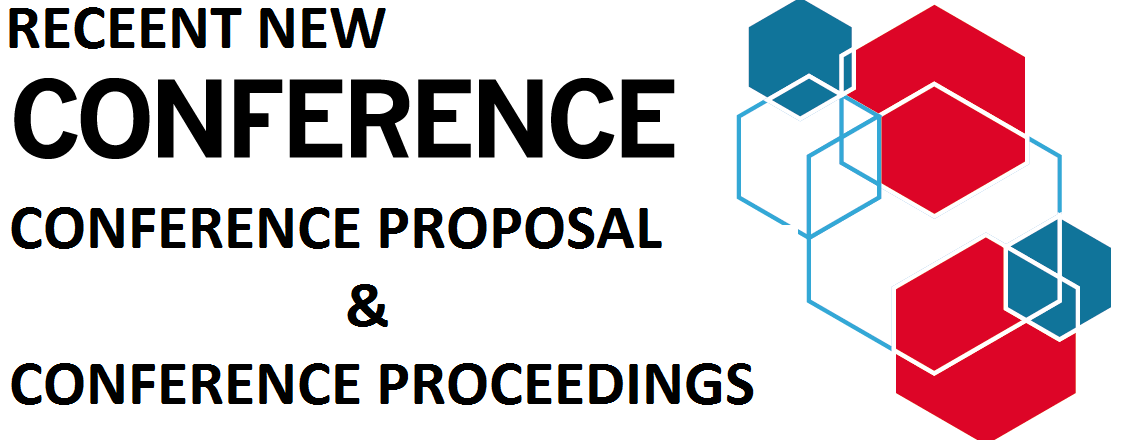
CONFERENCE PROPOSAL CONFERENCE PROCEEDINGS




